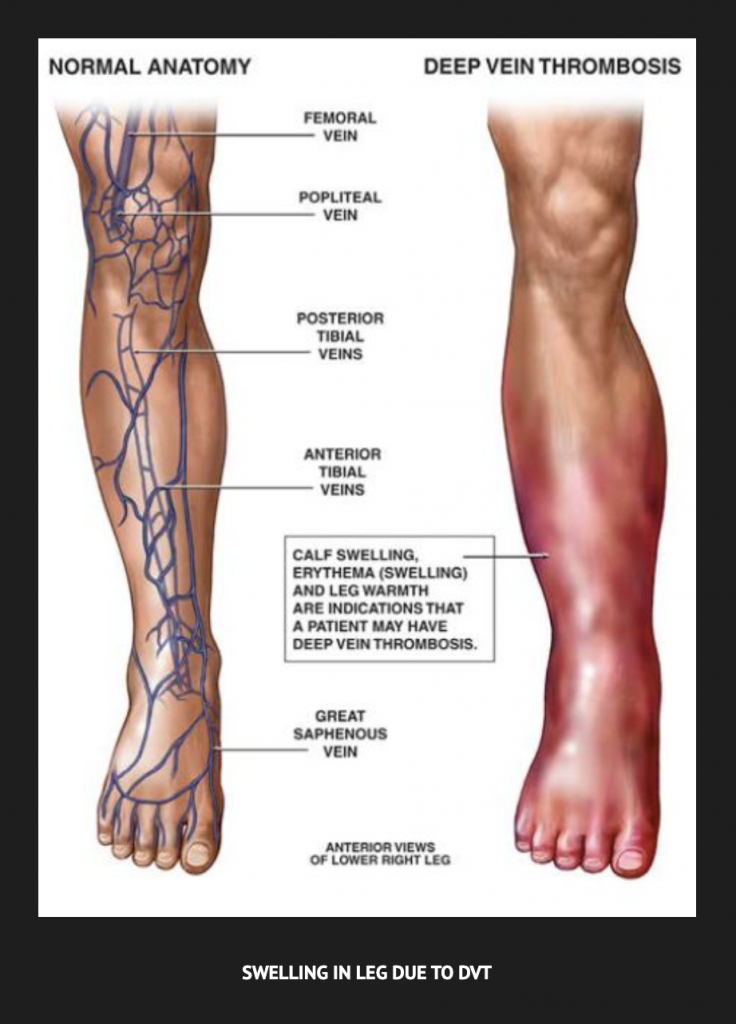
Masters in Exercise Science & Sports Physiotherapy
It has been months since the novel coronavirus (COVID-19) outbreak began its debilitating march across the world, resulting in high rates of morbidity and mortality, and yet the virus continues to surprise us.
Among the many concerns with COVID-19, one of the most alarming is that new emerging data shows that COVID-19 has life-threatening effects far beyond the respiratory system as was initially assumed.
During the COVID-19 pandemic, doctors have seen more cases of blood clot-related conditions like deep vein thrombosis (DVT), which is a condition that occurs after a blood clot forms in a large vein, most often in the calf. Pain, swelling, and sometimes pulmonary embolism (or a sudden blockage in the lung) can occur, making deep vein thrombosis a life-threatening condition.

Many people believe that moving around can help avoid clotting issues like DVT.
But a recent study found no major link suggesting that movement alone helped lower the risk of blood clots in hospitalized people. So while most of us are less active during the pandemic, that fact alone probably won’t trigger a blood clot. it’s much more likely that other issues related to the virus itself cause the rise in blood clot cases.
Blood Thinners and COVID-19
From the start of the pandemic, experts knew there was a tie between a higher chance of blood clots and the COVID-19 virus. To combat this, doctors looked at how they gave blood thinners to people hospitalized with the virus. They’d either get a high dose or, instead of just one dose, they’d get a continuous infusion.
The Lasting Effects
For people with blood clots, the goal is to prevent further clots, lessen bleeding, and avoid death.
The normal operation of the lower-limbs relies on the venous system in the lower limbs and a complex system of impulse-aspiration pumps.
The “Calf Muscle Pump” is the most important pump in the lower limb and is the motive force to return blood to the heart; an inefficient Calf Muscle Pump often leads to chronic venous insufficiencies.
During active ankle joint movements, Calf Stretches, Hamstring Stretches and other lower limb actions, the calf muscle contracts and compresses the intramuscular and deep veins, raising venous pressure and propelling blood from the lower limb toward the heart.
Following the raised venous pressure, the veinous flow and capacities are automatically increased.
We have compiled a set of activities that you can easily do at home. These activities are essential for everybody and not just those suffering from DVT.
If you have specifically been diagnosed with DVT, you need to consult your medical practitioner before you start off on these exercises.
ANKLE MOBILITY ACTIVITIES FOR HOME
CALF MUSCLE PUMP ACTIVATIONS AT HOME
HAMSTRING STRETCHES AT HOME
HIP MOBILITY
CALF STRETCHES
© All Rights Reserved OSR Sportsworks Consulting LLP